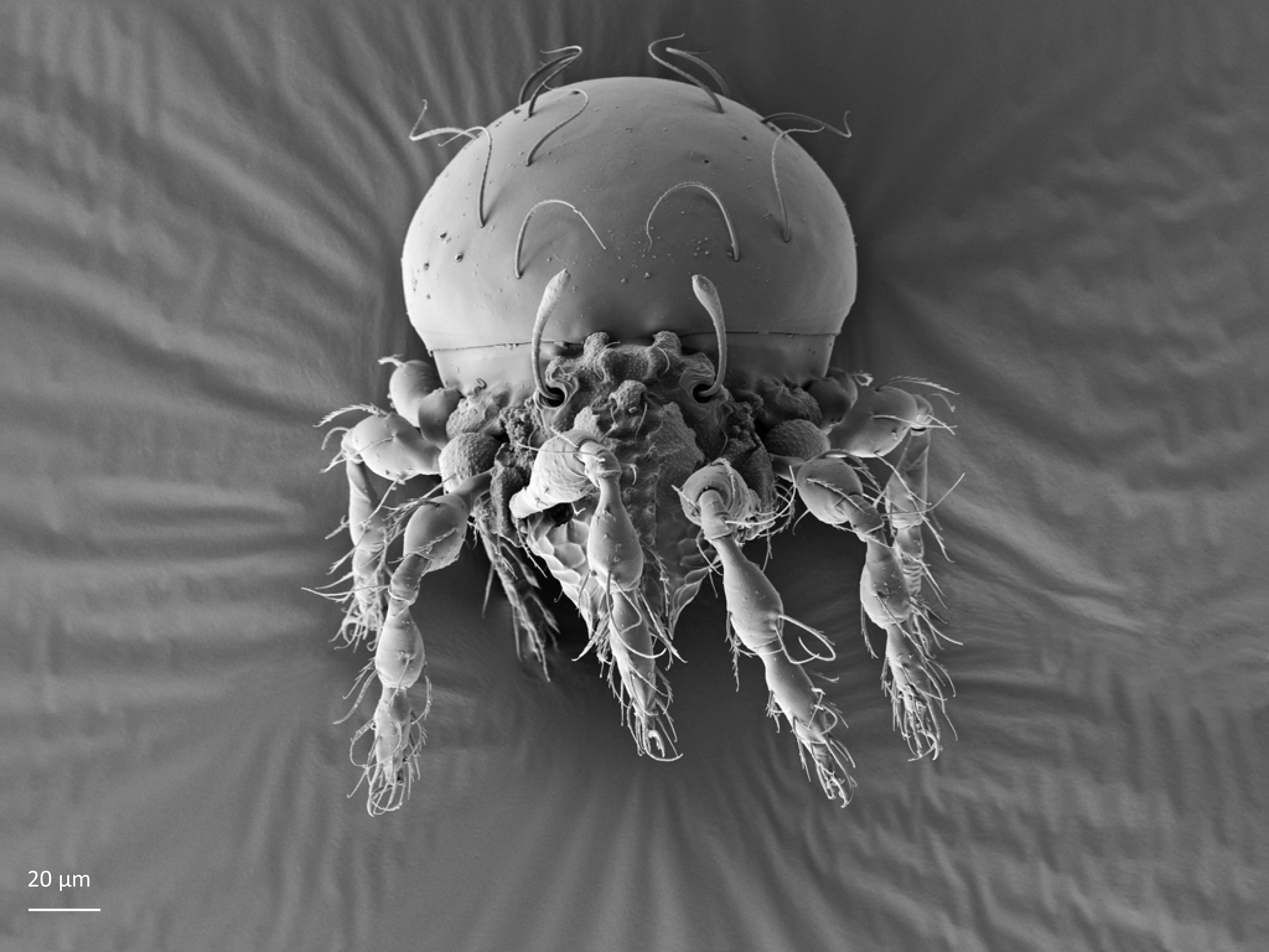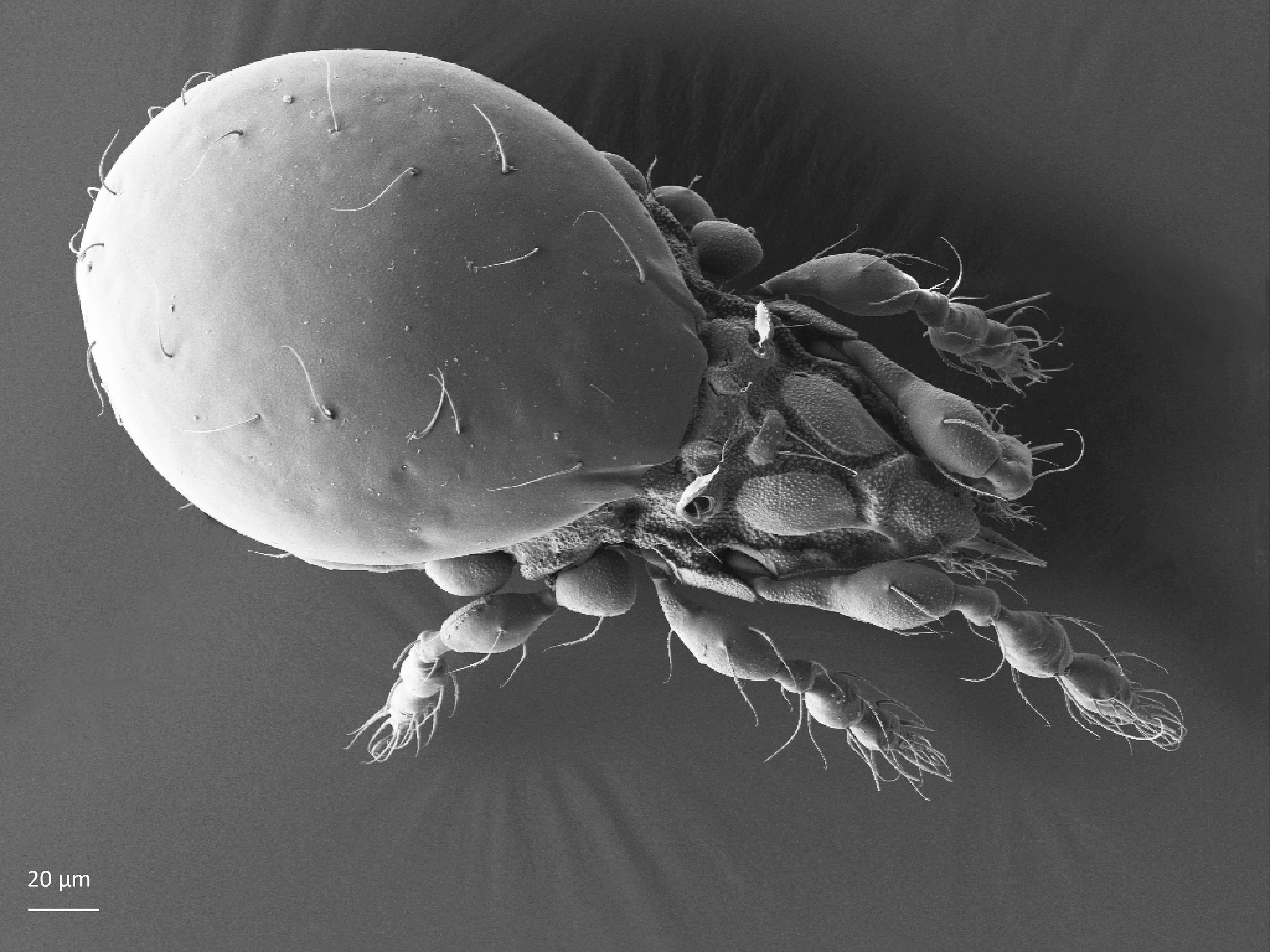Suctobelbidae
The family Suctobelbidae has a worldwide distribution. The mites of this family are parthenogenetic, which means that only females are present, and they are produced from unfertilized eggs.
- Innhold
- Characteristics
- Habitat and ecology
The family Suctobelbidae includes 21 genera, six subgenera, 341 species and 19 subspecies (Subías 2023).
Characteristics
The adults are small (170–300 µm long) and light brown. The prodorsum has characteristic stylet-like chelicerae. Usually, it has a pair of flat regions, known as tectopedial fields, and a central knot. The notogaster has 9–14 pairs of notogastral setae. Their legs are thickened like a string of pearls and have one claw (Weigmann 2006, Norton and Behan-Pelletier 2009, Behan-Pelletier and Lindo 2023).
Habitat and ecology
Suctobelbidae are found in soils of different ecosystems. Some species occur only in specific habitats, e.g., the species presented here, Suctobelba regia Moritz, 1970, is characteristic of acidic forest soils, while another species, Suctobelbata truncicola (Forsslund, 1941), is found under the bark on dead wood, and the species Suctobelbella latirostris Strenzke, 1950 occurs in mires. Some species are eurytopic, which means that they occur in many different habitat types, like e.g., Suctobelbella subtrigona (Oudemans, 1916).
The mites of this family are all parthenogenetic (Maraun et al. 2019), which means that only females are present, and they are produced from unfertilized eggs.
References
Behan-Pelletier VM and Lindo Z (2023). Oribatid Mites. Biodiversity, Taxonomy and Ecology. CRC Press, 508 pp.
Maraun M, Caruso T, Hense J, Lehmitz L, Mumladze L, Murvanidze M, Nae I, Schulz J, Seniczak A and Scheu S (2019). Parthenogenetic vs. sexual reproduction in oribatid mite communities. Ecology and Evolution 9(12), 7324–7332. doi.org/10.1002/ece3.5303
Norton RA and Behan-Pelletier VM (2009). Suborder Oribatida. In: GW Krantz and DE Walter (eds.). A manual of Acarology, 3rd ed. Texas Tech. University Press Lubbock, 430–564.
Subías LS (2023). Listado sistemático, sinonímico y biogeográfico de los Ácaros Oribátidos (Acariformes, Oribatida) del mundo (1758−2002). Graellsia 2004, 60 (número extraordinario), 3−305. Updated 2023 – 18 actualization, 540 pp., access December, 2023.
Weigmann G (2006). Hornmilben (Oribatida). Die Tierwelt Deutschlands. 520 pp. Vol. 76, Goecke and Evers, Keltern.

